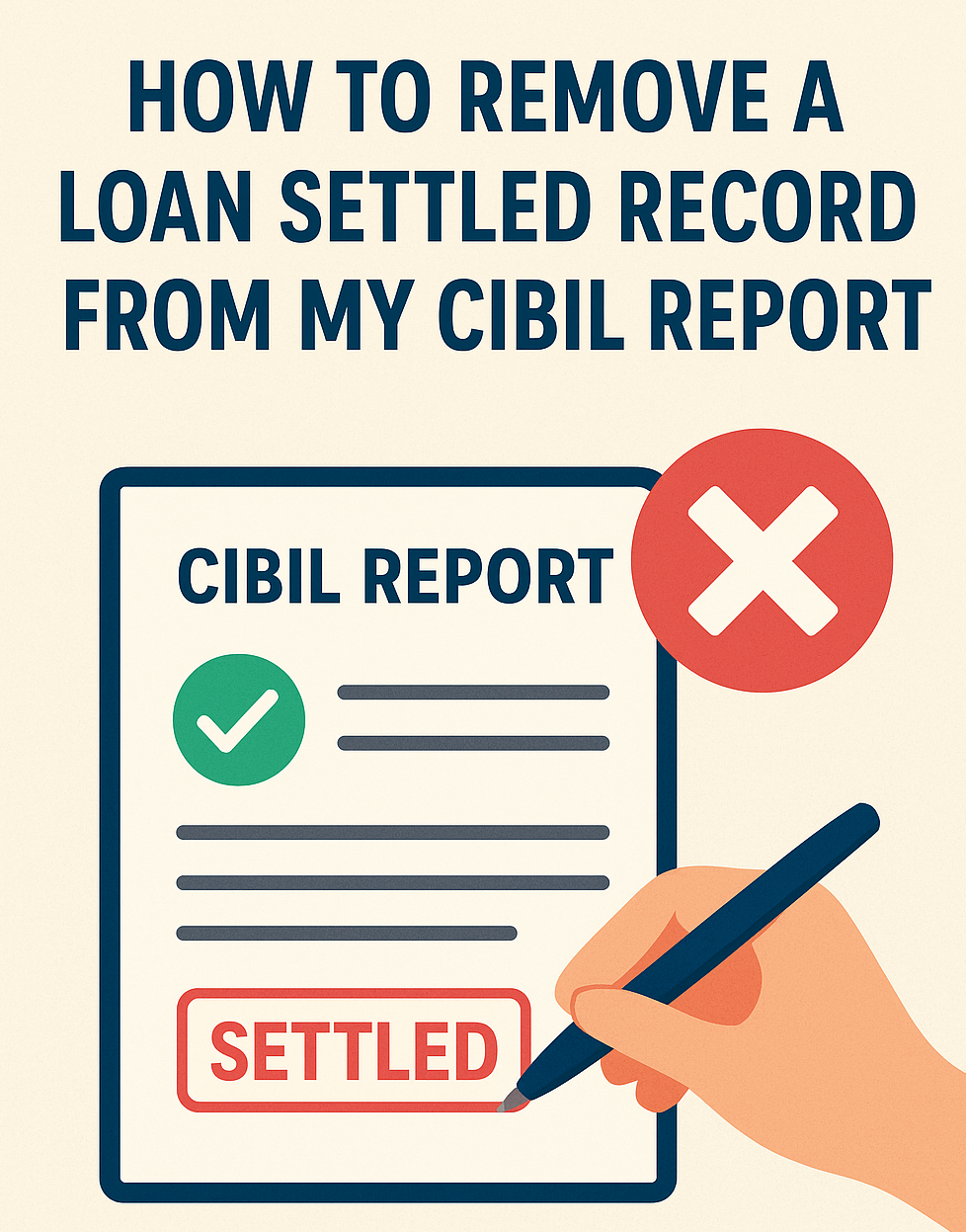A Loan Settlement can be a lifeline when you can’t cope with debt. It usually means your lender has consented to take a part payment to settle the account, saving you from more dire action. Yet, though this may provide a temporary respite, the history of a settle loan on your CIBIL report can drop your credit score dramatically & make it more challenging to obtain loans or credit cards in the future.
Most borrowers later wonder, “How do I delete a loan settled record from my CIBIL report?” It is a sensible thing to do because how your credit history looks can influence your financial prospects for years. This blog tells you what a loan settlement is, why it shows up in your CIBIL report, and how you can correct or enhance it.
Understand Loan Settlement and Its Effect
A settlement of the loan occurs when you cannot pay the total amount due under the loan and settle with the lender to pay a lower amount. The lender will accept the lower amount as final and complete payment. Although this terminates your requirement to make payments under the agreed terms, this does not reflect well on your credit record.
Rather than the account being noted as “Closed,” it will be noted as “Settled.” The creditors and credit agencies view this as your failure to meet the original contract. The consequence is usually a decrease of 75 to 100 points or more in your credit score. To your potential lenders, you are now a riskier borrower, and it becomes harder to obtain new loans or credit cards.

Can You Delete a Loan Settled Record?
If you have an accurate record, it cannot be deleted prior to the natural reporting time, typically seven years. But you can do several things to have errors corrected, the status from “Settled” to “Closed,” and slowly build your credit score. These steps can assist you in restoring your creditworthiness over time.
Steps to Delete or Correct a Loan Settled Record
Pay off the Balance Remaining
The best approach is to settle the outstanding amount with your lender. Paying the outstanding dues, you can ask your lender to mark your account as “Closed” rather than “Settled.” This doesn’t remove the history at once, but it has a positive impact on your credit report in the long run.
Get a No Dues Certificate
After paying the dues, request your lender to provide you with a No Dues Certificate. This certificate assures you that you don’t have any dues outstanding. You can use it to pursue the credit bureau if the report status doesn’t change within a month or two.
Raise a Dispute with CIBIL
If your account status has not been upgraded by the lender in spite of the repayment, you can dispute the matter with CIBIL itself. Submit your payment vouchers and No Dues Certificate as evidence. CIBIL will confirm the facts with the lender before correcting your report.
Check for Reporting Errors
A “Settled” status is sometimes entered in error, even if you paid the full amount. On other occasions, the dates or amount due might be entered inaccurately. Double-check your CIBIL report thoroughly to be certain there are no such mistakes, and file a dispute at once if you do find any errors.
Negotiate a Goodwill Update
A few lenders might consider updating your record out of goodwill, especially if you are an old customer and have paid the dues promptly. This is not a certainty but is something worth asking for if you otherwise have a good repayment history.
Work on Credit Score Recovery
Even though the “Settled” comment cannot be erased immediately, you may attempt to rebuild your credit record. Paying all subsequent EMIs and bills promptly, paying bills duly, keeping a low credit utilization ratio & not applying for multiple loans can counteract the negative impact in the long run.
Myths regarding removing loan settlement records
There is a common myth that credit repair companies can delete these types of records instantly. Not true — no reputable firm can eliminate accurate adverse information overnight. Another myth is that filing a dispute guarantees deletion, which only occurs if the record is incorrect or outdated. Others believe that a loan settlement has no lasting impact, but it will linger on your report for as long as seven years.
How Long Does It Take to Update the Record?
If you have paid the dues outstanding, lenders typically update their records within 30 days, and CIBIL too indicates the update within a few weeks thereafter. The whole process takes generally between 30 and 60 days, subject to there being no disputes or verification holdups.
Guardians of Your Financial Comeback
We are India’s reliable legal consulting and loan settlement company, experts in debt relief and money dispute resolution. Our experts assist you in managing and resolving loans ethically while safeguarding you against harassment—all in our promise of restoring your financial freedom and having you in command again.

